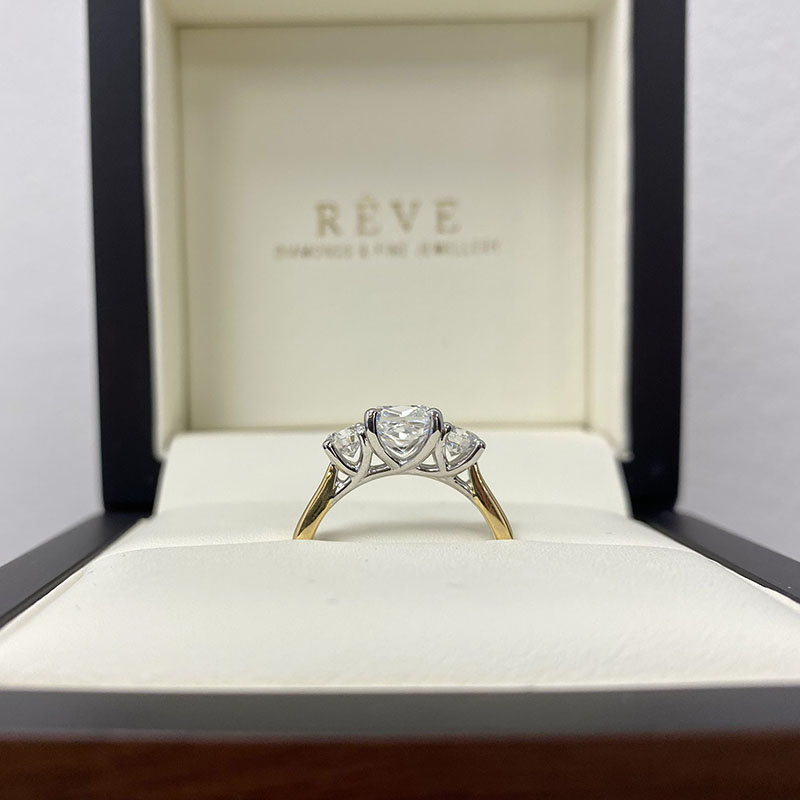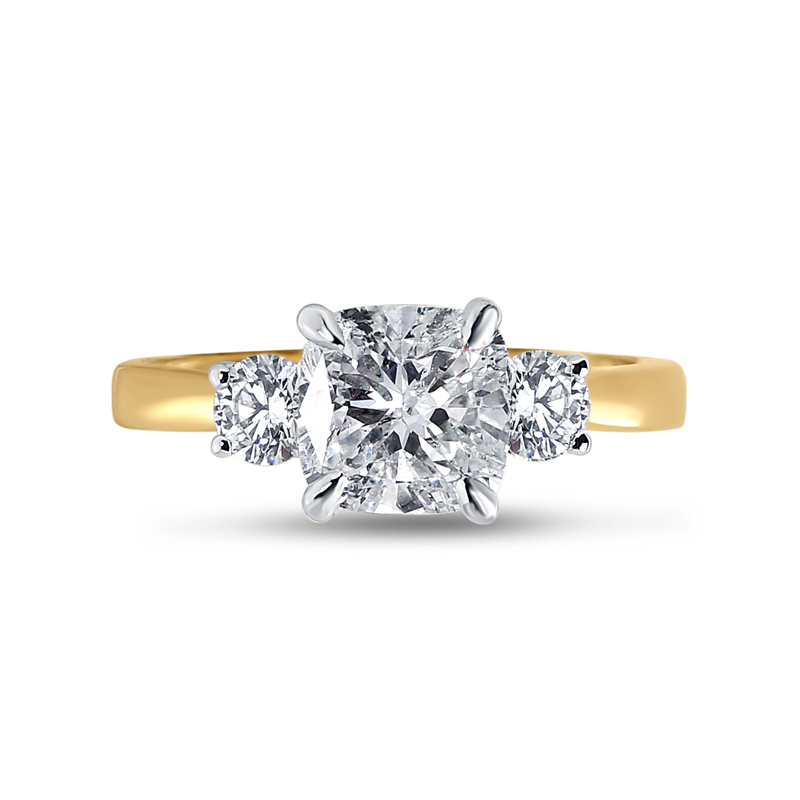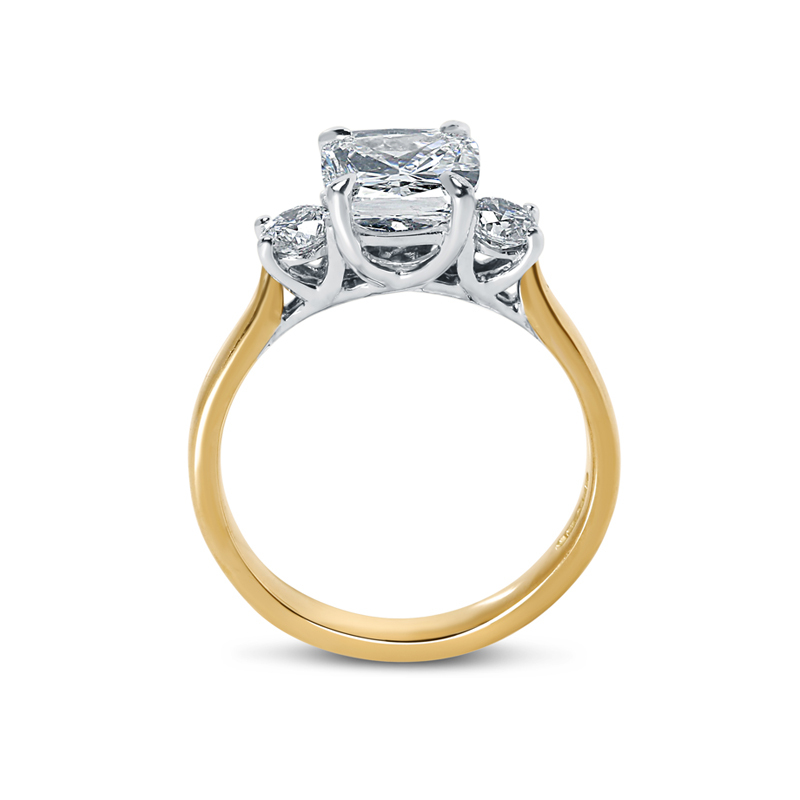The sparkle of royal jewelry always catches our eye, doesn't it? When Meghan Markle, a woman who has certainly captured the world's attention, first showed off her engagement ring, people everywhere started talking. It's a truly stunning piece, with its three beautiful stones. So, a question that has been whispered and wondered about quite a bit is, "Is Meghan Markle ring Lab grown?" This isn't just about a piece of jewelry; it's about a conversation that connects to bigger ideas, especially when we think about Meghan's own path and what she stands for.
You know, it's pretty interesting how much attention her ring gets, isn't it? Meghan's journey from Hollywood to becoming a Duchess, as we've seen, is quite a story. Her public presence, including her family life with Prince Harry and her strong voice for human rights, really makes people think about her choices. This question about her ring, in a way, seems to fit right into those broader discussions about ethics and personal values.
There's a lot to consider when we talk about diamonds these days, and the idea of lab-grown gems is certainly a big part of that. It's a topic that has gained a lot of traction, especially as people think more about where things come from and how they are made. So, let's take a closer look at Meghan's famous ring and see if we can shed some light on this very popular question.
Table of Contents
- Meghan Markle's Path: A Life of Purpose
- The Iconic Engagement Ring: A Closer Look
- Lab-Grown vs. Mined Diamonds: What the Difference Is
- The Truth About Meghan Markle's Ring: Is It Lab Grown?
- Why the Interest in Lab-Grown Gems?
- Meghan's Values and Her Choices
- The Future of Royal Jewelry and Ethical Sourcing
- Frequently Asked Questions About Meghan Markle's Ring
- Final Thoughts on the Royal Sparkle
Meghan Markle's Path: A Life of Purpose
Meghan Markle's journey has been quite something, hasn't it? She started out in Hollywood, making a name for herself, and then, quite unexpectedly, she became a Duchess. This transition brought her into a very different kind of public eye. We've seen her settle into family life with Prince Harry, and it's clear that their children, Prince Archie and Princess Lilibet, are a huge part of her world. For instance, she celebrated a sweet family tradition this weekend, marking Mothering Sunday in the UK with a heartfelt Instagram post that featured her children. That was a really touching moment, actually.
Her focus isn't just on family, though. Meghan has a very strong commitment to advocacy, especially for human rights. She and Prince Harry are very involved in charitable work, which is something they both seem to care about deeply. We've heard her speak about her own experiences, too, as she works on growing her business and deals with the ups and downs of being an entrepreneur. She even mused about whether she might one day go into politics, which, you know, shows her broad interests.
Her life has certainly had its share of public moments. Remember when she captioned a picture, making it clear that even though she left Canada, she would keep following the games from Los Angeles, cheering them on from home? That really showed her spirit. And just recently, Meghan shared a deeply personal and touching tribute to Prince Harry for Father's Day. There was also that photo of their Montecito home, which looked rather like a Roman palace from an unseen angle, shared on social media from their family's Fourth of July celebration. She even shared a new photograph of her eldest child, revealing that she and Harry had a party for Archie in the US, sharing a sweet shot of the youngster gazing at something. It's almost as if she gives us little glimpses into her very busy life. However, there have been some bumps, too. It's been noted that "Meghan and Harry have hired some of the most incredible people at the top of their fields, yet somehow none of them ever work out." Plus, Meghan, who is 43, is predicted to face pivotal choices regarding her children, Prince Archie, five, and Princess Lilibet, three, with 2025 marking a year of transformation. And, in an unexpected turn of events, Meghan Markle has been forced to put her public duties on hold. So, her life is very much in the public eye, and her choices often reflect her values.
Meghan Markle: Personal Details and Bio Data
| Detail | Information |
|---|---|
| Full Name | Rachel Meghan Markle |
| Age (as of 2024) | 43 (born August 4, 1981) |
| Spouse | Prince Harry, Duke of Sussex |
| Children | Prince Archie Harrison (five), Princess Lilibet Diana (three) |
| Residence | Montecito, California, USA |
| Notable Roles | Former Actress, Duchess of Sussex, Philanthropist, Entrepreneur |
| Advocacy | Human Rights, Gender Equality, Mental Health |
| Current Focus | Growing her business, charitable work with Prince Harry, family life |
The Iconic Engagement Ring: A Closer Look
When Prince Harry proposed to Meghan Markle, the ring he presented was, quite frankly, a showstopper. It has three main diamonds, and each one tells a bit of a story. The central diamond is a cushion-cut stone, a rather large and impressive gem. Flanking it on either side are two smaller, round diamonds. These smaller stones are very special indeed, as they came from the personal collection of Prince Harry's mother, Diana, Princess of Wales. This inclusion makes the ring not just beautiful, but also deeply sentimental, a tribute to his late mother.
The main diamond, the one in the middle, reportedly came from Botswana. This country holds a very special place for the couple, as it's where they spent time together early in their relationship, building a bond. The band itself is made of yellow gold, which Meghan has said is her favorite. Originally, the band was a solid yellow gold. However, Meghan later had the ring redesigned, changing the solid gold band to a thinner, pave-set band, meaning it's covered in tiny diamonds. This update gave the ring a slightly more modern and delicate feel, and you know, it's pretty common for people to adjust their rings over time.
So, the ring is a mix of new and old, personal history and a shared future. It's a truly unique piece, and its design elements are quite distinct. The choice of a Botswana diamond for the center stone is something many people noticed right away, given the country's significance to the couple. This detail, in particular, often sparks conversations about the origins of diamonds, which brings us to our main question about whether it's a lab-grown gem.
Lab-Grown vs. Mined Diamonds: What the Difference Is
When we talk about diamonds, there are, basically, two main kinds you'll hear about these days: those dug up from the earth, which we call mined diamonds, and those created in a controlled setting, known as lab-grown diamonds. It's a bit like comparing a flower grown in a garden to one that grows wild; they're both flowers, but their beginnings are different. A mined diamond forms deep within the earth over billions of years, under immense pressure and heat. Getting them out of the ground involves a whole process, often with large-scale operations.
Lab-grown diamonds, on the other hand, are made by people using advanced technology that copies the natural diamond-growing process. They are, actually, chemically, physically, and optically identical to mined diamonds. You can't tell the difference just by looking at them. You need special equipment to figure out if a diamond came from the earth or a lab. The main distinction is their origin. One comes from the ground, and the other comes from a lab. That's really the long and short of it.
The discussion around these two types of diamonds often includes ethics and the environment. Mined diamonds have, in the past, faced questions about "conflict diamonds" or "blood diamonds," which are gems sold to fund wars. While the industry has worked hard to stop this with things like the Kimberley Process, some people still have concerns. There are also environmental impacts associated with mining, like land disruption and energy use. Lab-grown diamonds, in some respects, offer an alternative that aims to reduce these concerns. They are generally seen as a more ethical choice because they don't involve mining, and their production can be more controlled, potentially with a smaller environmental footprint, depending on how the energy for the lab is sourced. It's a pretty big topic for people who care about where their purchases come from.
The Truth About Meghan Markle's Ring: Is It Lab Grown?
So, let's get right to the heart of it: Is Meghan Markle's ring lab grown? The answer, based on all the publicly available information and what has been widely reported, is no. The diamonds in Meghan Markle's engagement ring are not lab grown. They are, in fact, natural, mined diamonds. The central stone, as we talked about, is from Botswana, a country that Prince Harry has a deep connection with. The two smaller diamonds on either side are from his late mother, Princess Diana's, personal collection. These are, without a doubt, natural diamonds that were part of royal history and a very personal family legacy.
The idea that her ring might be lab-grown likely comes from Meghan's known interest in ethical sourcing and human rights. People, quite naturally, connect her values with the choices she might make, and lab-grown diamonds are often promoted as a more ethical or sustainable option. However, in this particular instance, the history and origin of the diamonds are well-documented. The Botswana diamond, for example, was specifically chosen by Prince Harry for its connection to their early relationship and, reportedly, for its origin in a country that has benefited from its diamond industry. It's a very specific detail, and you know, it's been talked about a lot.
It's important to understand that while lab-grown diamonds are becoming more popular and are a great choice for many people looking for an ethical and environmentally conscious option, they simply aren't the source of the diamonds in Meghan's engagement ring. The ring is a symbol of love, family history, and a shared future, made with diamonds that have a very clear, natural origin. So, for those wondering, the answer is pretty clear: it's a natural diamond ring, with a very personal touch from royal history.
Why the Interest in Lab-Grown Gems?
It's pretty interesting, isn't it, how much talk there is about lab-grown diamonds these days? There's a real shift happening in what people want and care about when they buy jewelry. One big reason for this growing interest is, basically, ethics. After years of concerns about "blood diamonds" and the human impact of mining, many people are looking for alternatives. Lab-grown diamonds offer a way to get a real diamond without the worry of contributing to conflict or questionable labor practices. That's a huge draw for a lot of consumers, as a matter of fact.
Another major factor is the environment. Mining for diamonds can be a pretty intensive process, using a lot of resources and sometimes changing the landscape. Lab-grown diamonds, while they still require energy to produce, are often seen as having a smaller environmental footprint. Companies that make them are working to use renewable energy sources, which makes them even more appealing to environmentally conscious buyers. It's a way for people to feel good about their purchase, knowing it aligns with their values.
And then there's the cost, which is a pretty big deal for many. Lab-grown diamonds are generally less expensive than mined diamonds of the same size and quality. This means people can often get a bigger, more impressive stone for their budget, which is, obviously, a very attractive proposition. Celebrities and public figures, like Meghan Markle, also play a part. When someone famous wears or talks about something, it often brings it into the mainstream. While Meghan's ring isn't lab-grown, the public's general awareness and interest in her choices do contribute to the wider conversation about ethical and sustainable products, including diamonds. It's a sort of ripple effect, if you will.
Meghan's Values and Her Choices
When we think about Meghan Markle, it's pretty clear she has a strong set of values that guide her. From her time in Hollywood to her life as a Duchess, she's consistently shown a deep care for human rights and social causes. We've seen her and Prince Harry championing various charitable works, which, you know, speaks volumes about their commitment to making a positive difference. This focus on doing good, in a way, often leads people to wonder about all her choices, including things like her jewelry.
Meghan has also been open about her own experiences, especially as she grows her business and deals with the ups and downs of being an entrepreneur. This personal side, where she shares her challenges and successes, makes her very relatable. She's someone who seems to put a lot of thought into things, from her advocacy to her family life. For instance, her heartfelt Instagram post for Mothering Sunday, or her deeply personal tribute to Prince Harry for Father's Day, show a very genuine connection to her family and traditions. These are not just public displays; they seem to be deeply felt moments.
Given her known stance on ethical issues and her support for causes that promote fairness and sustainability, it's not a surprise that people would ask, "Is Meghan Markle ring Lab grown?" It's a natural question to ask about someone who clearly cares about where things come from and how they are made. While her engagement ring's diamonds are natural, the public's curiosity about it highlights the growing importance of ethical sourcing in consumer choices. Her influence, in a way, helps to keep these important conversations going, even if her own choices don't always align with the latest trends in every single aspect. She's a person who inspires thought, and that's a pretty powerful thing.
The Future of Royal Jewelry and Ethical Sourcing
The world, as we know, is always changing, and that includes how we think about precious items like royal jewelry. For centuries, royal families have collected and passed down incredible pieces, often with diamonds and other gems sourced from mines around the globe. These pieces are, in some respects, part of history, symbols of tradition and lineage. However, as public awareness grows about ethical sourcing and environmental impact, the conversation around all luxury goods, including royal jewels, is starting to shift. It's almost as if people are asking for more transparency, which is a good thing, really.
It's not just about what Meghan Markle's ring is made of, but about the bigger picture. Will future generations of royals choose lab-grown diamonds for new pieces, or will they continue to rely solely on natural, mined gems? This is a question that, quite frankly, many are starting to ponder. The royal family, like other institutions, is under increasing scrutiny to reflect modern values and concerns. This might mean, in the future, a greater emphasis on where gems come from, ensuring they are conflict-free and sourced in ways that are as gentle on the earth as possible. It's a pretty big topic, actually.
The trend towards ethical sourcing is not going away; it's getting stronger. Consumers, especially younger ones, are very conscious of the story behind their purchases. So, it's entirely possible that we will see royal families, or at least individual members, making choices that reflect these changing attitudes. Perhaps new pieces will feature lab-grown diamonds, or at least natural diamonds with very clear, independently verified ethical certifications. It's a slow process, to be honest, but the conversation is certainly happening. Learn more about sustainable practices on our site, and link to this page about ethical sourcing in jewelry.
Frequently Asked Questions About Meghan Markle's Ring
Here are some common questions people ask about Meghan Markle's famous engagement ring:
What kind of diamonds are in Meghan Markle's engagement ring?
The diamonds in Meghan Markle's engagement ring are natural, mined diamonds. The large center stone is from Botswana, and the two smaller side stones belonged to Prince Harry's mother, Princess Diana. So, they are not lab-grown gems.
Did Meghan Markle change her engagement ring?
Yes, Meghan Markle did have her engagement ring redesigned. Originally, the ring had a solid yellow gold band. She later had it updated to a thinner, pave-set band, which means it's covered in tiny diamonds. This gave it a slightly more modern look, which, you know, is a pretty common thing to do with jewelry.
What is the significance of the diamonds in Meghan's ring?



Detail Author:
- Name : Dr. Aidan Frami I
- Username : ysatterfield
- Email : hilpert.katelyn@yahoo.com
- Birthdate : 1991-03-24
- Address : 80562 Bernier Rapid Bernhardland, NC 92889-8932
- Phone : (930) 770-3220
- Company : Kerluke LLC
- Job : Director Of Marketing
- Bio : Aut repellat repellendus dolore corrupti quisquam ut ut. Ut cumque voluptatum aut dolorem dolorem. Nam ea unde exercitationem temporibus.
Socials
linkedin:
- url : https://linkedin.com/in/jenkinsa
- username : jenkinsa
- bio : Ut expedita ea consequatur sunt dolorum.
- followers : 5255
- following : 2651
instagram:
- url : https://instagram.com/jenkinsa
- username : jenkinsa
- bio : Officiis enim rerum quam autem. Suscipit mollitia nam dicta non.
- followers : 272
- following : 2180
facebook:
- url : https://facebook.com/amelie_xx
- username : amelie_xx
- bio : Minus non id qui nulla. Nobis occaecati sunt dolorum placeat dolor non debitis.
- followers : 6333
- following : 2708